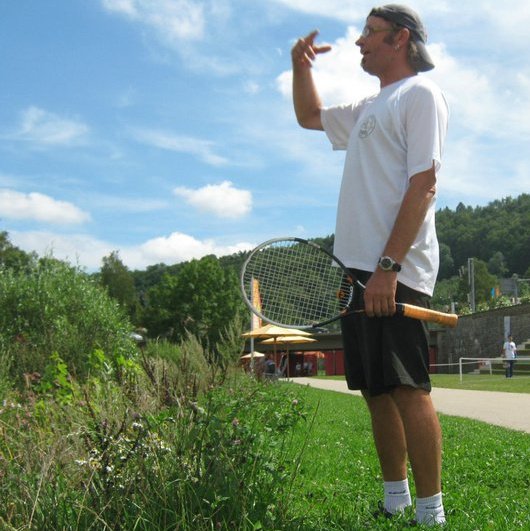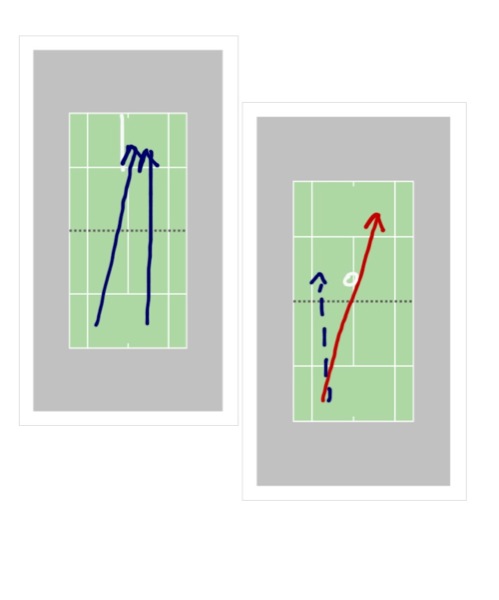Steal This Drill: Mirror-Mirror
 Wednesday, December 21, 2011 at 11:59AM
Wednesday, December 21, 2011 at 11:59AM  CAtennis
CAtennis  Here is an interesting drill for training groundstrokes as well as for warming up. The best part about this drill is that it can be performed with 4 (or more) players on court so it could be useful for situations where the court-time is limited (e.g. indoors). The basic drill is as follows:
Here is an interesting drill for training groundstrokes as well as for warming up. The best part about this drill is that it can be performed with 4 (or more) players on court so it could be useful for situations where the court-time is limited (e.g. indoors). The basic drill is as follows:
1. Players play on one-half of the court. This can be either the down-the-line half (including/excluding doubles - coach's choice) or the cross-court half (including/excluding doubles - coach's choice).
2. One of the players feeds a deep (aim for 2-3 feet from the baseline) ball into his opponent's half.
3. The recipient (the "proactive" player) hits either a forehand or a backhand.
4. Here's the scope of this drill: whatever the recipient hits (forehand/backhand), the feeder (the "reactive" player) has to match/mirror. Hence the "mirror-mirror" name for this drill. It's "open play" when one of the players makes it to the net. However, players should be encouraged to play from the baseline so as to hone their groudnstroke and body-language instincts.
5. Variations for this drill include instances where the point is "opened up" (i.e., any shot goes after the ball cross the net a certain number of times: 6-8-10, etc.). Furthermore, although initially the players must only match the stroke (forehand-for-forehand; backhand-for-backhand), as the players develope they can also be encouraged to copy the spins. So if the receiver hits a slice backhand, the feeder must hit that as well. Lastly, the players can also do "opposite" mirror - so if the proactive player hits a forehand, the reactive player has to hit a backhand. An additional layer of complexity can be added by forcing the reactive player to hit not just the opposite shot but the opposite spin as well (e.g. BH slice when opponent hits FH topspin; and vice versa).
The drill teaches the players to be proactive in terms of dictating play (this goes for the receiver) and also to "read" the opponent's body language in order to make adjustments with respect to stroke and spin (particularly for the feeder...the "reactive" player). The reactive player MUST REALLY PAY ATTENTION in order to do this drill well. So focus is also improved. In addition, the feeder (reactive player) is taught how to control the point and seek to gain the upper hand from a relatively defensive position (i.e., turning defense into offense). Footwork is also a huge component of this drill - as the the "reactive" player hits the ball and immediately has to recover and adjust for the next ball from the "proactive" player.
If you would like to share any drill ideas or practical suggestions for improving the game, please email us at catenniseditor@gmail.com or contact us on Facebook. As always, if you like the information, please pass it along to anyone who may be interested.




